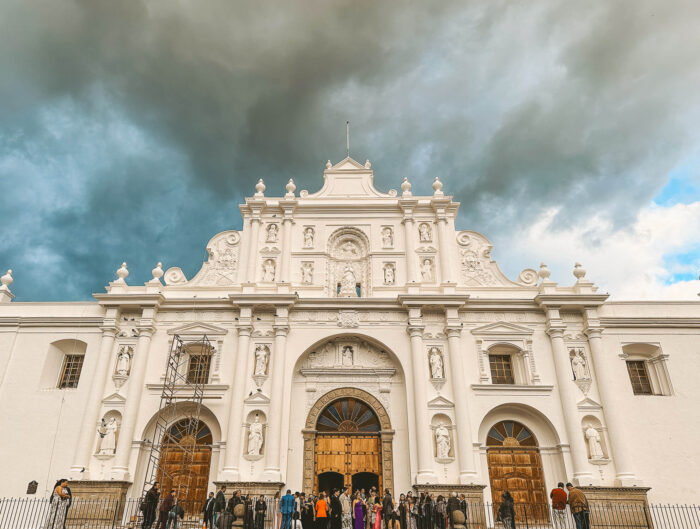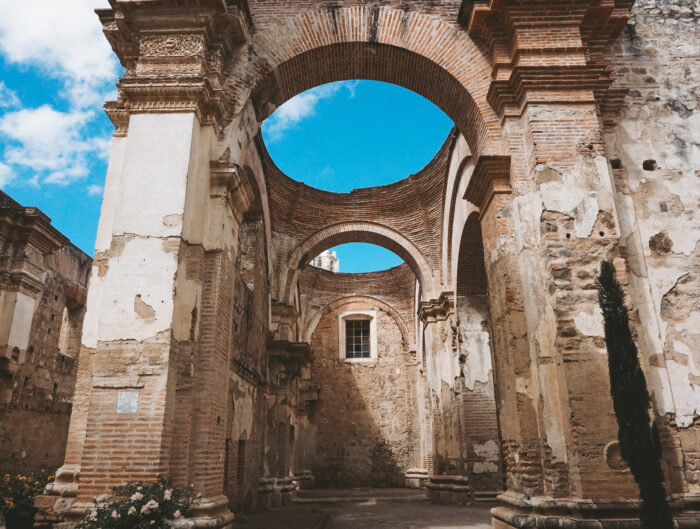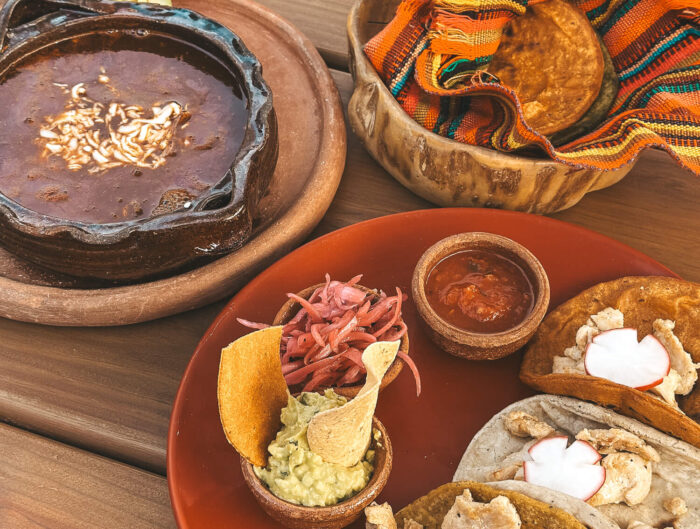Japan! Read this post for all my Japan travel tips and a 2-week itinerary.
I was so lucky to get the chance to visit Japan. Like so many before me, I was dazzled by my visit. I enjoyed the food, the culture, and the historical buildings.
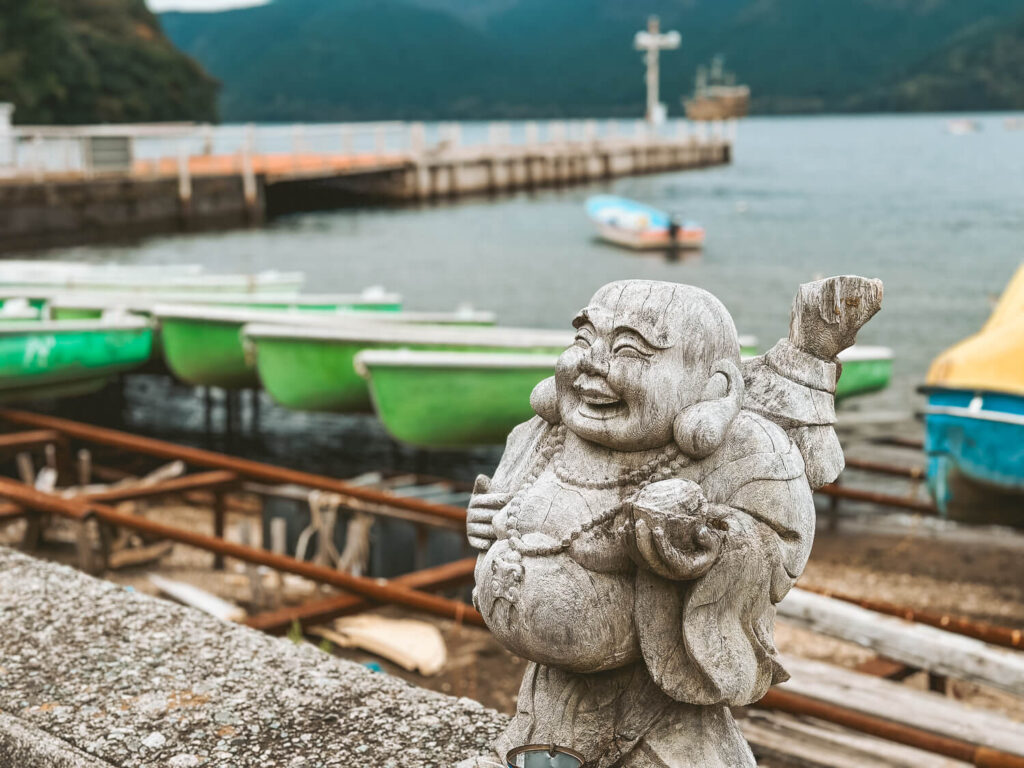
I highly recommend a trip to Japan. This country is great for people who want to explore a city and are adventurous eaters. To help you plan your trip, this post gives you all the nitty gritty details and tips. Keep reading for information and an itinerary.
Why Visit Japan
“Can you do that with more care?” A server quietly asked this to another server (in Japanese) during one of our meals, and it illustrates one of the things that makes Japan so special. The care that Japanese people put into their actions, fashion, and way of living is extraordinary. People are thoughtful, kind, generous, and helpful. Even if they’re frustrated on the inside, they are patient and understanding outwardly. It was easy to feel welcomed as a traveler.
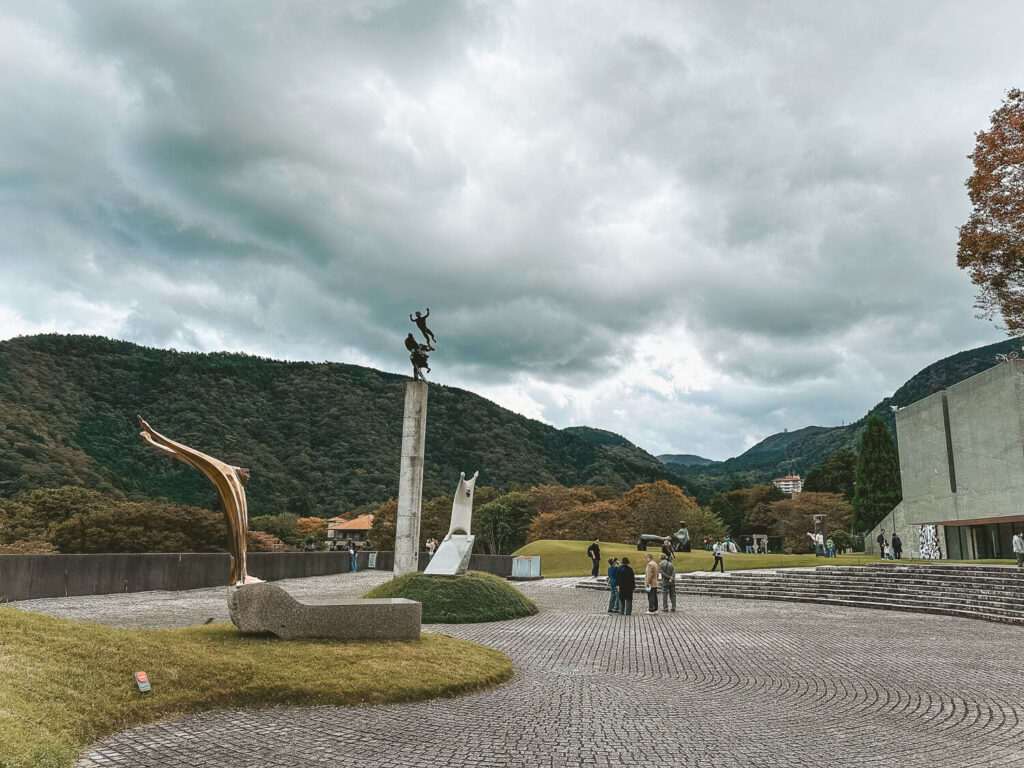
In cities that are crowded and busy, I felt carefree. (Though I know I might have some bias from being on vacation.) Their thoughtful living makes processes efficient. You know to expect the order of where to stand when you get on and off a train. You aim to get everywhere early.
The food is so good! There are so many unique dishes to try. Seafood is a major ingredient in their diet, but you’ll see plenty of other protein. It might be slightly harder if you are vegan or gluten-free, but it’s possible!
It’s relatively easy to get around. The train system is extensive.
Altogether, you should visit Japan to marvel at its brilliance. From great hospitality to incredible meals, you’ll find a warm adventure when you visit.



Quick Tips
- Visa: Most countries, including the U.S., will receive a 90-day visa upon arrival.
- Language: Japanese
- Currency: Japanese Yen. $1 USD is about 148 JPY
- Credit Cards: Widely used. Cash is good for street food markets
- Tipping: None required
- Capital City: Tokyo
- Water: Tap water is drinkable
- Vaccinations: No special vaccinations are needed.
- Religion: Primarily Shinto and Buddhism
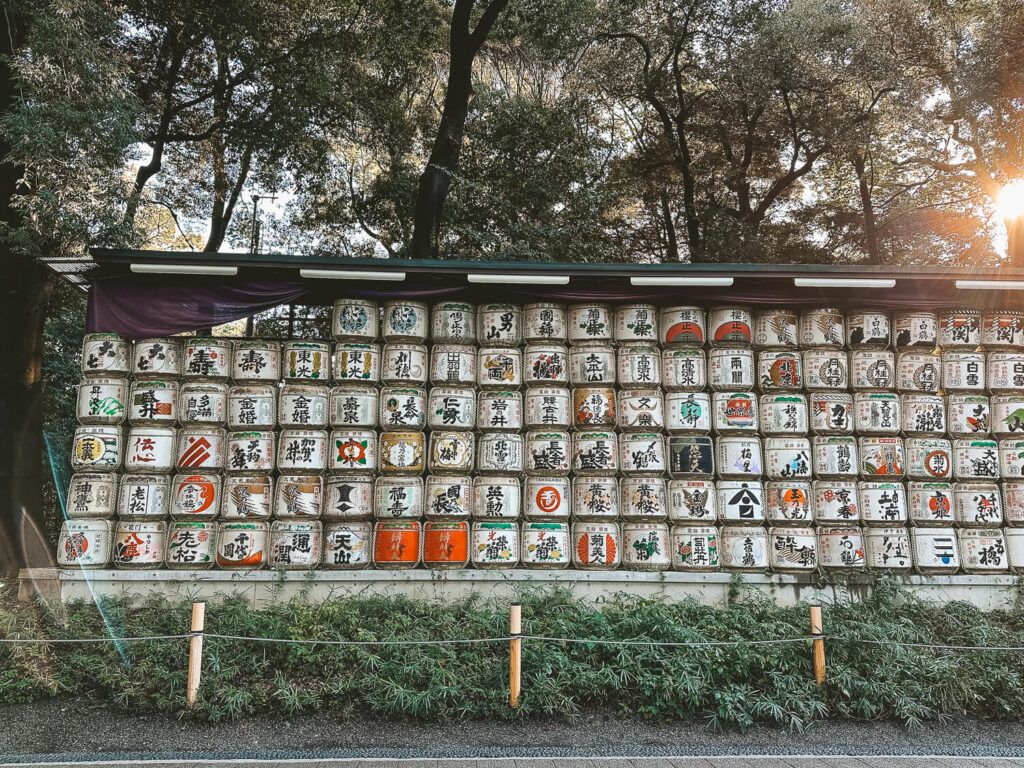
When to Visit Japan
The best months are fall (September to November) and Spring (March to May). This will also be the high season when you can expect more tourists.
Which Cities to Visit
It’s hard to pick a favorite city! Each one has its pros/cons and things that make it unique. This section will share more about the cities travelers usually visit.
We went to 5 cities (6 cities for one of us) in 2 weeks, with 2 cities (3 cities for one of us) as day trips. We visited what some would call the “greatest hits” or the most popular cities for tourists.



While we loved each place, you can expect crowds and high-traffic city life. Of course, there are less popular cities to visit, but you have to factor in the time and money to get there (possibly less availability on trains) and the number of resources, like restaurants to try, in that place. It’s not impossible and depends on how you want to spend your time!
- Tokyo – Tokyo is very efficient and orderly. They have to be with that many people! You’ll find fewer trash cans (and less trash) on the street and clear signs indicating where to stand for the train. But while people are more reserved, they will jump to help you if you look lost in a train station.
- Hakone – If you want to find a slower pace in a mountain town and enjoy hot springs, Hakone is a good option. You could see Mount Fuji from here.
- Osaka – This city is very similar to Tokyo but a little less strict. The people are more carefree and so are their habits. For example, there are more trash cans on the street and more trash strewn about. I found locals are less likely to jump to your aid but are friendly when asked.
- Kyoto – This city is the place of many shrines and temples. It’s where to go to learn about Japanese history and traditional customs like tea ceremonies and see old relics. If this is important to you, I recommend staying a few nights here and getting up early to see the sights. It gets exhaustingly crowded at popular tourist sights.
- Nara – While Nara is known for its wild bowing deer, you’ll also want to visit the most impressive Buddhist temple.
- Hiroshima – Most tourists probably know Hiroshima from its WW2 history. You can visit to see old buildings from the nuclear attack and memorials. It’s a bittersweet place to see and honor history.
- Hokkaido – This is Japan’s northernmost island. This region is popular for outdoor activities, like hiking and skiing.
- Okinawa – I want to come back and visit Okinawa to scuba dive!
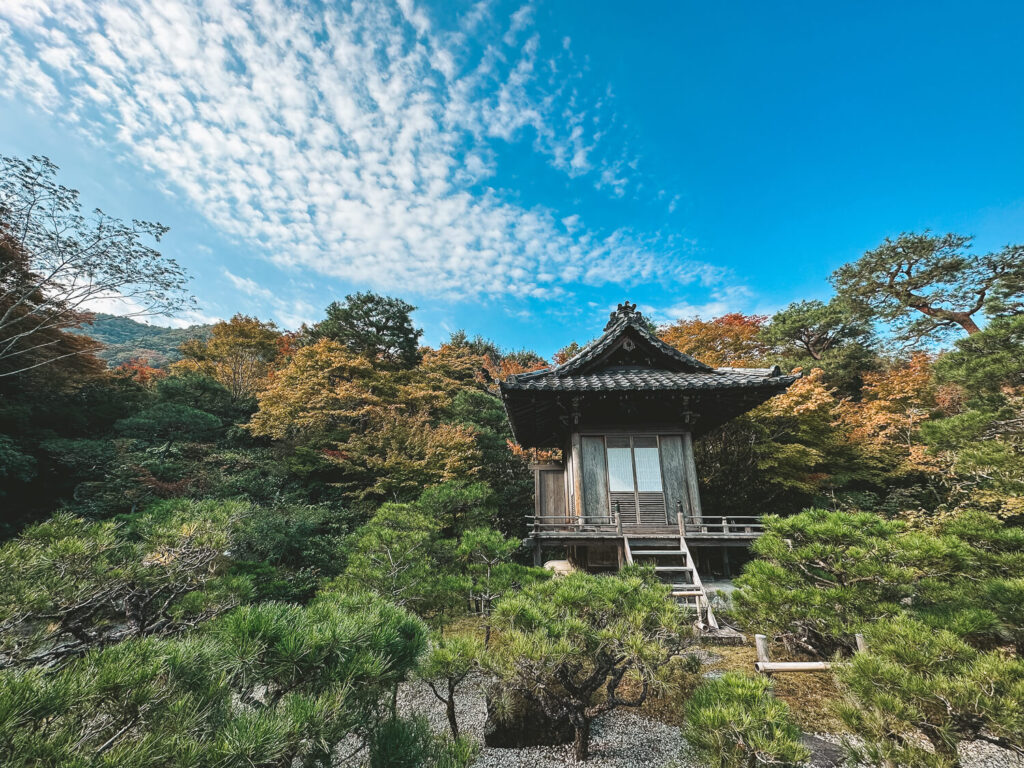
How to Get There
International flights will likely fly into Tokyo for the most direct access. There are two airports in Tokyo – Narita (NRT) and Haneda (HND). Haneda is the one closest to Tokyo’s center. Narita is about an hour’s drive from the center of Tokyo.
How to Get Around
Public transportation is efficient and widely accessible in Japan. You can travel from city to city and within cities with almost one card. Train station signage is usually abundant and clear, with English, color coding, and numbers.
We bought the JR Pass, which is about $563 for 14 days of travel. It’s recommended if you’ll be going to other cities and is supposed to be cheaper than paying for each route. This allowed us to take multiple long train rides. The pricing changed in the fall of 2023, so it’s recommended to price out your routes to see if the JR Pass pricing will save you money or not.
You’ll also need a Suica card. This is a metro card you can reload and it’ll get you around most train stations. You can get this at the airport when you land. This card will also take you longer distances, like city to city.
Google Maps or Apple Maps is your best friend! It will give you specific train information.
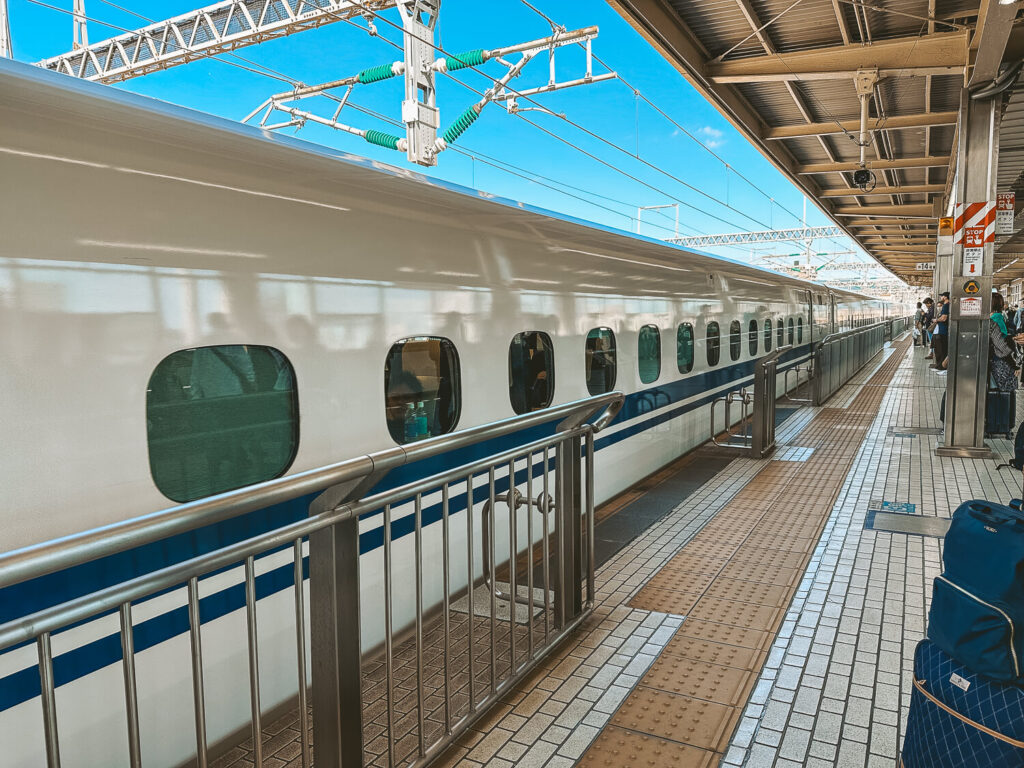
What to Wear in Japan
Dress for the season and layers are best. I went in the fall (Temperatures in the 60-70s) and noticed Japanese are very modest and dress warmly, commonly wearing pants or long dresses/skirts and also covering their arms.
Key Japanese Phrases to Know
While becoming fluent in Japanese is not necessary, knowing a handful of phrases shows respect and can get you further. I recommend watching some YouTube videos about “Japanese words for tourists” to get prepared. If all else fails, pointing, gesturing, and Google Translate will help you get by.
Here are some phrases I used:
- Konichiwa – hello
- Arigato gozaimas – thank you
- Sumimasen – excuse me
- Onegashimas – please
- Konbibi- convenience store
- Mizou – water
- Toyay – toilet
- Kanpai – cheers
- Hai – yes



What to Eat in Japan
I’ve got plenty of posts to help you plan what to eat! This includes special meals to make a reservation for and experiences to plan around.
- 8 Best Foodie Experiences in Japan
- Sushi Omakase at Sushi Punch in Tokyo, Japan
- Kaiseki Michelin Meal at Yugen in Osaka, Japan
- 20 Best Eats and Drinks I Had in Japan
- Wagyu Tasting at Tsurugyu in Osaka, Japan




2-Week Japan Itinerary
The following 15-day itinerary combines things: what I had planned, what we did, and what I would do differently. It’s somewhat my ideal schedule but it’s also packed! When you’re looking at this to plan your trip, I would note the groupings of activities because of physical proximity but edit the schedule to your interests.
Some changes I made:
- We spent 3 nights in Hakone, which was relaxing, but could be a bit slow. It depends on how fast you travel.
- We had a day trip to Kyoto, but I would have liked to see more of Kyoto, either doing another day trip there or staying two nights in Kyoto. The train from Osaka to Kyoto is about 15 minutes, so you would save a bit of time by staying in Kyoto.
Day 1 – Travel Day
- Flight to Tokyo – left Austin at 7 am and stopped in Houston, left Houston around noon
Day 2 – Night in Tokyo
- Land in Tokyo at 3:30 pm – about a 14-hour flight
- Take the train to our hotel
- Walk to Omoide Yokocho (restaurant alley) for dinner
- Post-dinner walk around the Shinjuku neighborhood or Golden Gai for drinks
Day 3 – Tokyo
- Meiji Jingu Shrine (Shibuya) – opens at 5:20 am, large park to walk around
- Grab breakfast nearby – in Shibuya/Harajuku neighborhoods
- Lunch: Relax Shokudo (Harajuku) – traditional bento box meal
- Explore Haranjuku neighborhood
- Explore Shimokitazawa neighborhood for shops and vintage
- Shibuya Crossing around 6pm
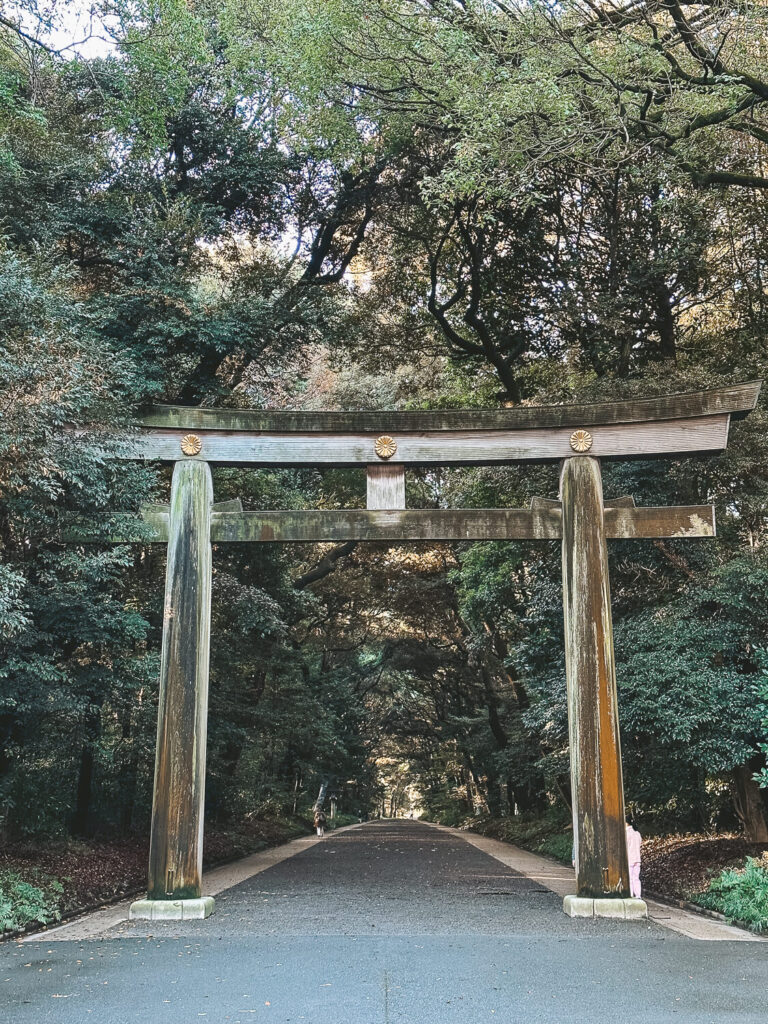
Day 4 – Tokyo
- Hie Shrine (opens at 6am)
- Imperial Palace (opens at 9am)
- Explore the Ginza neighborhood – Itoya Stationery Shop, Bongen Coffee
- Lunch: Kanda Matsuya – soba noodles
- Explore Akihabara – games
- Snack: Aoi Marushin – tempura
- Sensō-ji* – Buddhist temple
- Asakusa Shrine
- 5pm Ninja Food Tour
Day 5 – Tokyo
- Tsukiji Fish Market (open 8am – 2pm)
- Team Lab
Day 6 – Travel to Hakone
- Breakfast/lunch
- Take the train from Tokyo to Hakone
- Check into hotel
- Get a massage
- Dinner included at the hotel


Day 7 – Hakone
- Go up the Hakone Ropeway to Owakudani
- Take the pirate ship sightseeing tour
- Visit the Hakone Open Air Museum – sculpture art
- Dinner included at the hotel
Day 8 – Travel to Osaka
- Take train from Hakone to Osaka in AM (3 hr ride)
- Shitennoji Temple
- Tennoji Park
- Dotonbori neighborhood – Kuroman Ichiba Market
- Taste Osaka Food Tour
Day 9 – Osaka
- Osaka Castle
- 40 min train to Namaze to Takedao (3.4mi hike)
- Cup Noodle Museum
Day 10 – Day trip to Hiroshima
- Train to Hiroshima – 2 hours
- Visit the memorial garden and museum
Day 11 – Day trip to Kyoto
- Train to Kyoto – 15 mins
- Hokan-ji Temple
- Tea Ceremony at Camellia Flower Teahouse
- Kiyomizu-dera Temple
- Yasaka Shrine
- Explore Gion neighborhood
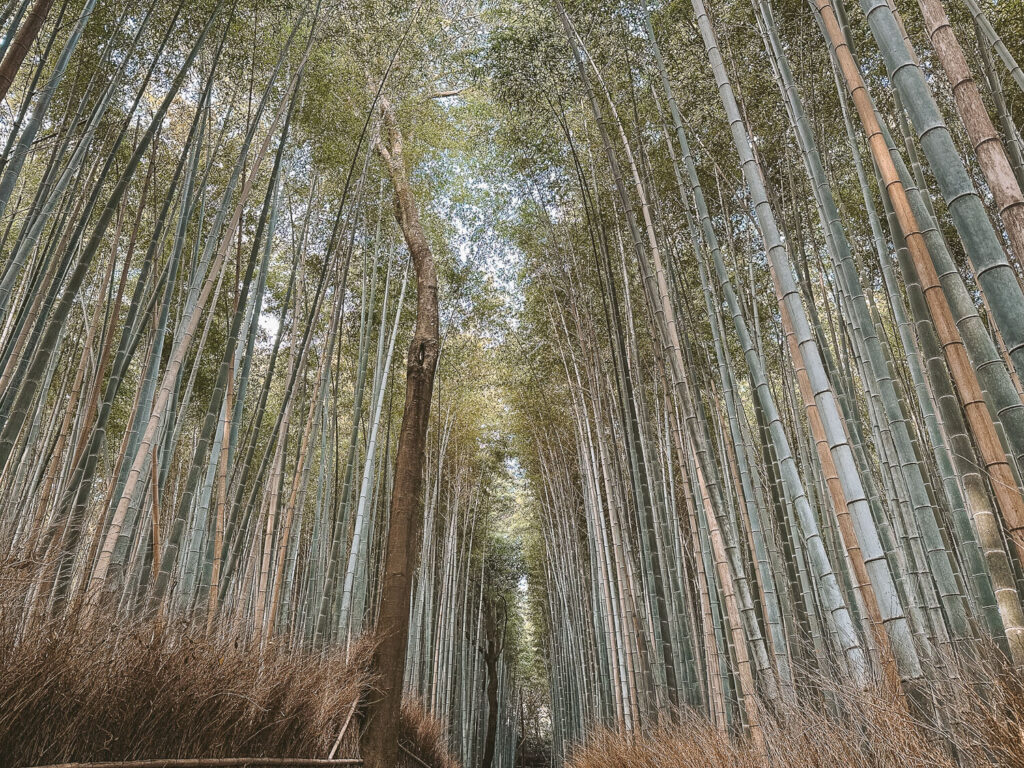
Day 12 – Day trip to Kyoto
- Train to Kyoto – 15 mins
- Arashiyama Bamboo Forest – get there very early because it gets crowded
- Nijo Castle
- Nishiki Market
- Fushimi Kandakara Shrine
Day 13 – Day trip to Nara
- Train to Nara – 45 mins
- Explore Nara Park (all day, stop for lunch)
- Kasuga-Taisha Shrine – Shinto shrine with famous interior, 9am public prayer service
- Tōdai-ji Temple – Buddhist temple complex
- Hōryū-ji – Buddhist temple
- Kasugayama Primeval Forest
- Lunch at Hiraso
- Mochi at Nakatanidou (go before 2 pm)
- Take train back for dinner in Osaka



Day 14 – Travel to Tokyo / Last Night in Japan
- Take train from Kyoto to Tokyo
- Mori Art Museum
- Last-minute souvenir shopping
Day 15
- Flight to Austin – leave Tokyo at 10:30 am, arrive in Houston at 8:30 am, arrive in Austin at 1 pm




Quick Reference of our Trip
- Airline to Japan: All Nippon Airways
- Tokyo Hotel: JR Blossom Shinjuku
- Tokyo Hotel: Royal Park Hotel Tokyo Haneda
- Hakone Hotel: Masutomi Ryokan
- Osaka Hotel: Karaksa Hotel Grande Shin-Osaka Tower
- Tokyo Food Tour: Ninja Food Tours
- Osaka Food Tour: Taste Osaka
- Kyoto Tea Ceremony: Camellia Flower Teahouse
- Train: JR Rail Pass, Suica Card
Japan, I hope to see you again one day. I’d love to dive in Japan one day!


For more tips and recommendations, here are all my Japan posts:
- 13 Best Things To Do in Japan for a Fantastic Trip
- 8 Best Foodie Experiences in Japan
- 10 Helpful Tips You Need for Your Japan Trip
- 20 Best Eats and Drinks I Had in Japan
- Kaiseki Michelin Meal at Yugen in Osaka, Japan
- Wagyu Tasting at Tsurugyu in Osaka, Japan
- Sushi Omakase at Sushi Punch in Tokyo, Japan

